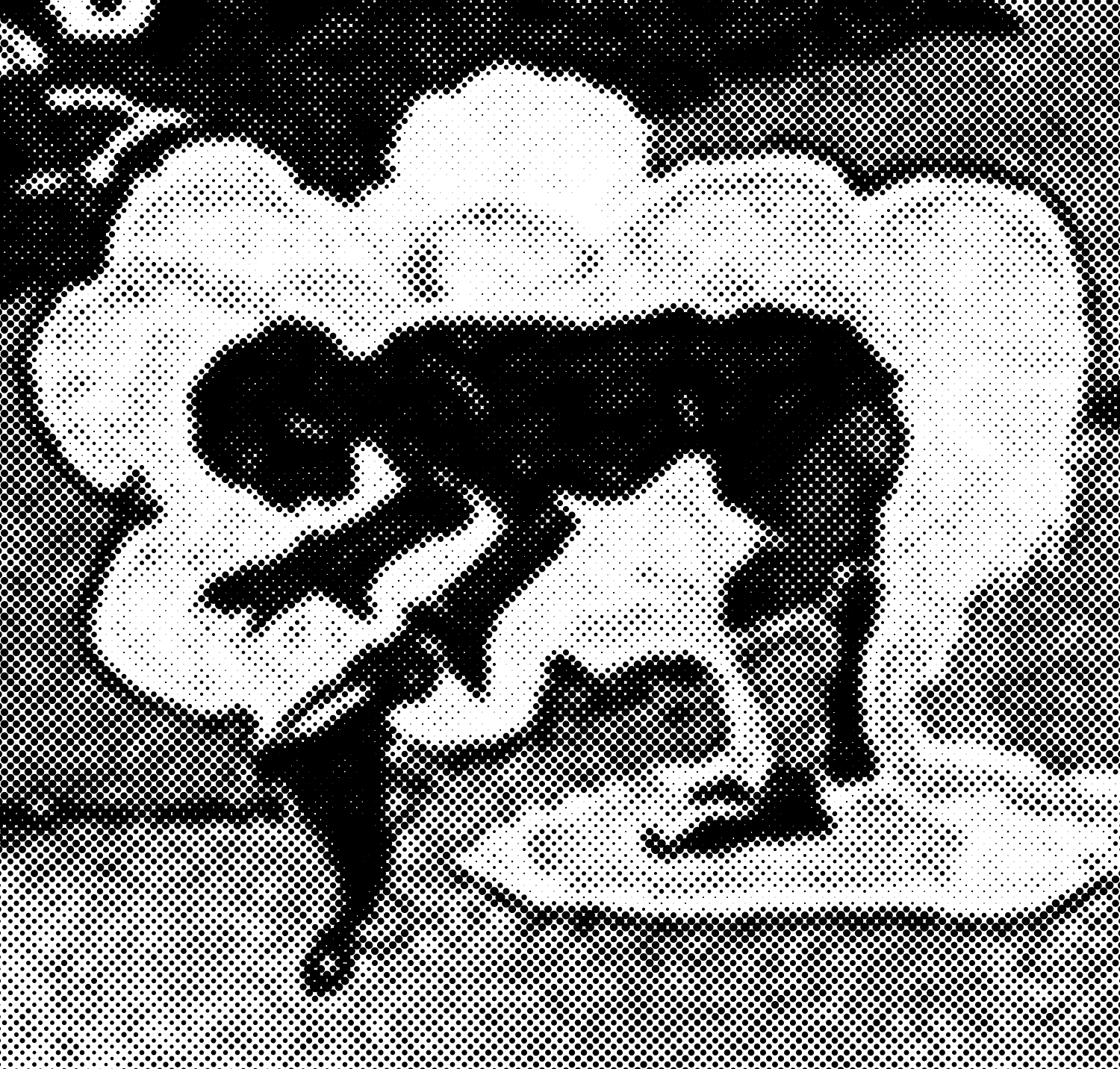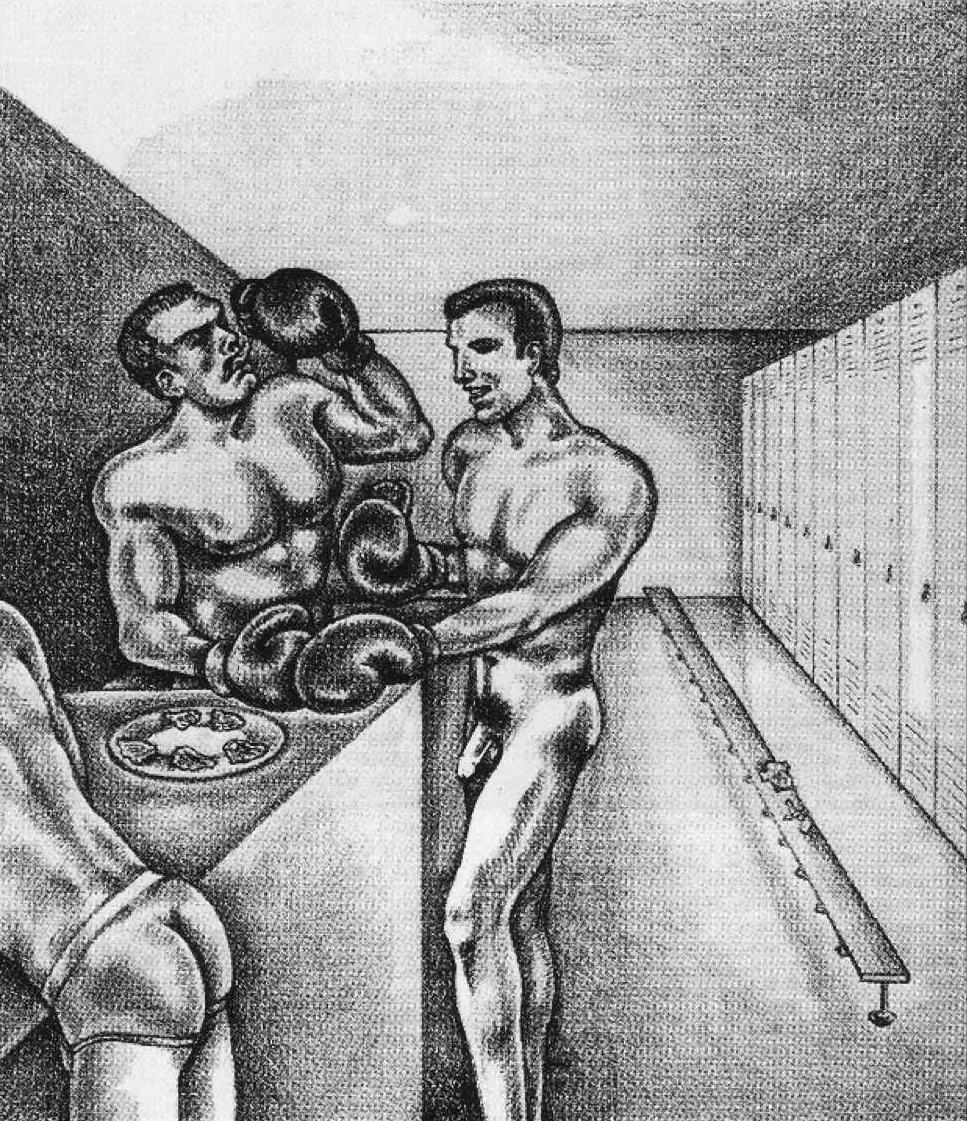Bilbo Baggins and the Metropolitan Bachelors
“…[What] is a hobbit? …They are (or were) a little people, about half our height, and smaller than the bearded Dwarves. Hobbits have no beards. …They are inclined to be fat in the stomach; they dress in bright colours (chiefly green and yellow); wear no shoes, because their feet grow natural leathery soles and thick warm brown hair like the stuff on their heads (which is curly); have long clever brown fingers, good-natured faces, and laugh deep fruity laughs (especially after dinner, which they have twice a day when they can get it).” – J.R.R. Tolkien, The Hobbit, or There and Back Again, (London: HarperCollins Publishers, 1995), 20.
“Eating oysters with boxing gloves, naked, on the 9th floor” – KOHL’S, “Rem, 1977 : Life in the Metropolis or The culture of congestion,” in Architectural Design 47, no.5.
I checked out Tolkien’s The Hobbit from the Beinecke Library, the book’s second U.S. edition, published in 1957, to be exact. Unlike the first edition published in the UK, two illustrations produced by Tolkien himself span the American cover: The Hill: Hobbiton-across-the Water and Conversation With Smaug. While The Hill depicts a village, there are no human figures to be found. Conversation With Smaug, on the other side of the cover, likewise lacks a human being. Instead, a big red dragon with sly, searching eyes takes center stage. The object of Smaug’s mischievous gaze is none other than Bilbo Baggins himself, the most famous and beloved character in the world of Tolkien and the protagonist of the book. There he is in the bottom right corner of the image, an indiscernible shadow of a silhouette, a tiny, not-exactly-human creature.

It is a well-known fact that in inventing his beloved Middle-earth, Tolkien used artistic means as much as literary ones. He produced over 180 sketches, diagrams, maps and watercolors of his fantasy kingdom; these illustrations are as important to the creation of Middle-earth as his writerly output.1 A curious aspect of his artworks, however, is this lack of human figures. Although there are practical reasons for this absence2, it seems more likely that Tolkien abstained from introducing human-like beings because, to create an entirely new world, he felt it was necessary to also produce entirely new versions of the human figure. And so, in the realm of the Fairy, one only finds elves, orcs, hobbits and wizards—creatures that have no existence in the actual world. Even the so-called “Second People,” the closest stand-in for mankind in Middle-earth, are not exact counterparts of the human. They are, rather, more like a re-designed version of man, tweaked and altered by Tolkien to fit his imaginary landscapes. Similar non-human beings are routinely found in other realms of fantasy, on the covers of novels, subjects of HBO soft-core gore porn, MMORPGs, illustrations, and more.
One can find a correspondence to Tolkien’s new beings in Rem Koolhaas’ portrayal of the Downtown Athletic Club, which he describes, in Delirious New York, as a self-contained world that cultivates its own invented creatures. This fantastical athletic facility, he writes, is “an instrument that permits the members—too impatient to await the outcome of evolution—to reach a new strata of maturity by transforming themselves into new beings, this time according to their individual designs.”3 These new beings are the metropolitan bachelors, “eating oysters with boxing gloves, naked on the 9th floor.” Vividly depicted by Madelon Vriesendorp’s illustration, they are impossibly fit, Tom of Finland-esque creatures that bear only passing resemblance to earlier visions of the human.

The book An Unfinished Encyclopedia of Scale Figures without Architecture4 presents a diverse array of the human figures that have been found in architectural drawing over the course of history. Traversing the scale figures from A (Aalto, Alvar) to Z (Zumthor, Peter) one sees that architects aren’t exactly following a timeless norm in drawing the human; instead, they seem to be continuously reinventing a new form of the species. Martino Stierli seconds these observations, arguing that the role of scale figures has changed throughout the history of architecture. In the Renaissance, an idealized human figure was the model for architectural space, while in the time of modernism, the human figure lost its vitality, becoming a ghost-like presence subservient to abstract architectural principles 5.
Beatriz Colomina and Mark Wigley describe in detail this new modernist architectural figure: “Yet finally humans are not so present in the images of the modern design. Objects, systems, buildings, neighborhoods, rooms, and circuits are only occasionally visited by the human … [The human] ultimately does not play a major role in design discourse precisely because it is seen to be represented and upgraded by design itself. The human is but a ghost, a shadowy figure that does not have to be there” 6. Modern design, like the Downtown Athletic Center before it, has yielded its own figure, this time not a chiseled bachelor but a phantom presence, paled in comparison to its environment.
Turning back to Middle-earth, it becomes clear that Tolkien’s design of new beings shares much in common with these supposedly non-fantastical architectural renderings. Tolkien invented a highly intricate world of bucolic hobbit villages and dangerous forests, and, like an architect drafting up her imagined space, he carefully drew and measured his fantastic landscape in his maps and paintings. He then invented the small, furry, delightful beings that his newly created world required. Modernist architects likewise imagined novel worlds and, only then devised the new species these designs demanded. The human figure, these fantasies show us, is not an a priori category, but a malleable, contingent being, molded to the fantastic imaginings of its creator.
1. There is an exhibition going on about his artwork—Tolkien: Maker of Middle-earth at Morgan Library & Museum, January 25 through May 12, 2019.
2. Christina Scull and Wayne G. Hammond, authors of The Lord of the Rings: A Reader’s Companion, note that although “J.R.R. Tolkien was a talented amateur artist who began to paint and draw while still a boy, and continued to do so until the end of his life,” his strength was in rendering “trees, flowers, and mountains… his ability to draw the human figure was limited.”
3. Rem Koolhaas, Delirious New York, (Oxford, Oxford University Press 1978), 157 – 158.
4. Michael Meredith, Hilary Sample, MOS, An Unfinished Encyclopedia of Scale Figures without Architecture, (Boston, The MIT Press, 2019).
5. Martino Stierli. “Fare Buona Figura: Some Remarks…” in An Unfinished Encyclopedia of Scale Figures without Architecture, (Boston: MIT Press, 2018), 12.
6. Beatriz Colomina and Mark Wigley. Are We Human? Notes on an Archaeology of Design, (Zürich: Lars Müller Publishers, 2016)